Insect predators and parasitoids feed on flower nectar and pollen to meet or complement their nutritional requirements. Studies have shown that these floral resources aid in enhancing the survival and fecundity of these natural enemies. Thus, it is useful for growers and gardeners to consider how to enhance the habitat for our insect allies through the addition of insectary plants – those documented to provide floral resources to beneficial insects. Pollinator insects can also benefit from habitat diversification efforts that include these plants. Some plant families, like the carrot and aster families, are outstanding sources of insectary plants primarily due to their flower shape. Insect natural enemies like parasitoid wasps have tiny mouthparts and they find floral resources in these families to be very accessible. In addition to floral resources, plants can also provide refuge or overwintering habitat for beneficial arthropods. This list summarizes results from studies that have documented floral visits or use of a plant resource by beneficial arthropods that include insect predators, parasitoids and spiders.
| Plant Family | Plant Common Name | Scientific Name | Resource for Beneficials | Beneficials Attracted | Plant Image |
|---|---|---|---|---|---|
| Asteraceae | Common yarrow | Achillea millefolium | nectar, overwintering site | Hover flies, parasitoids Overwintering habitat for spiders. | 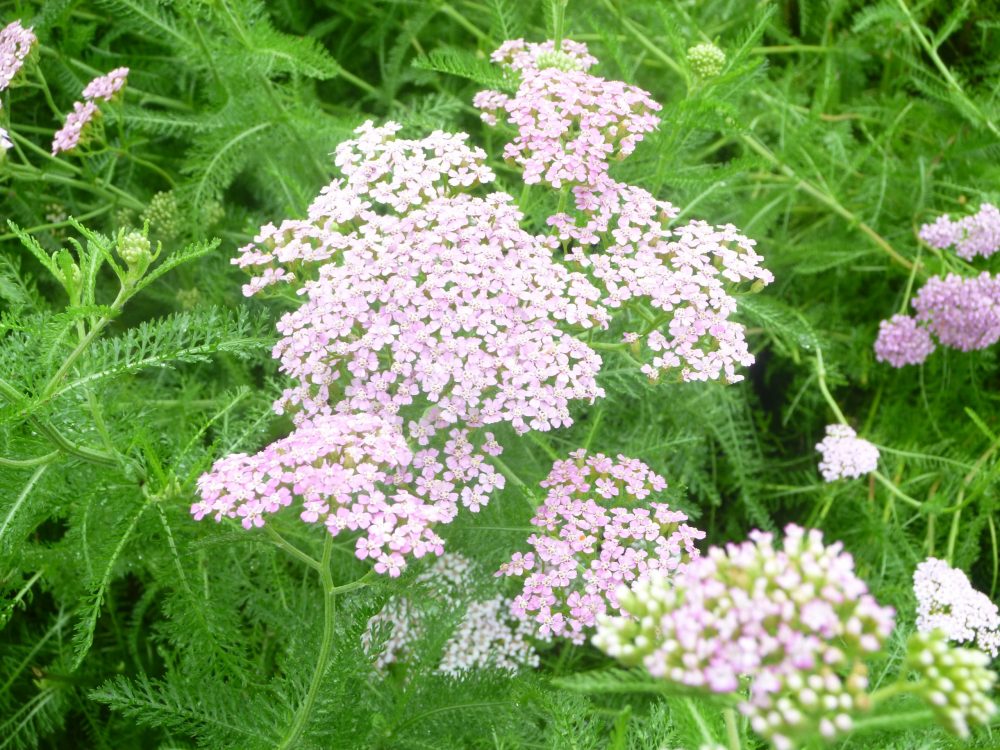 |
| Asteraceae | Cornflower or Bachelor’s buttons | Centaurea cyanus | nectar, pollen, extrafloral nectar | Hover flies, hymenopteran parasitoids, lacewings, predaceous wasps | 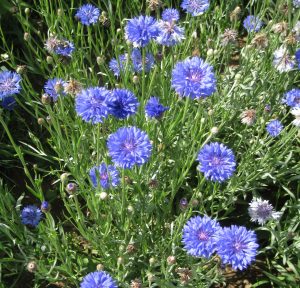 |
| Asteraceae | Chicory | Cichorium intybus | nectar, overwintering site | Hover flies, Overwintering habitat for spiders. | 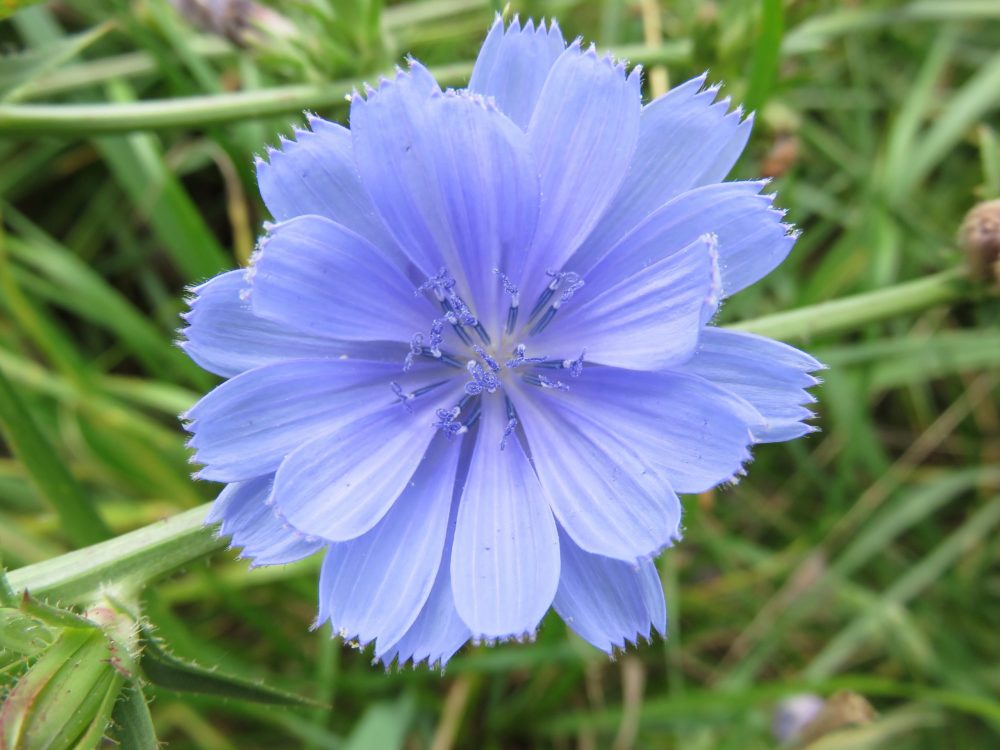 |
| Asteraceae | Common Sunflower | Helianthus annuus | nectar, pollen | Predators and parasitoids |  |
| Asteraceae | Camphorweed | Heterotheca subaxillaris | nectar | Tachinid and hover flies, lacewings, ladybird beetles, hymenopteran parasitoids | 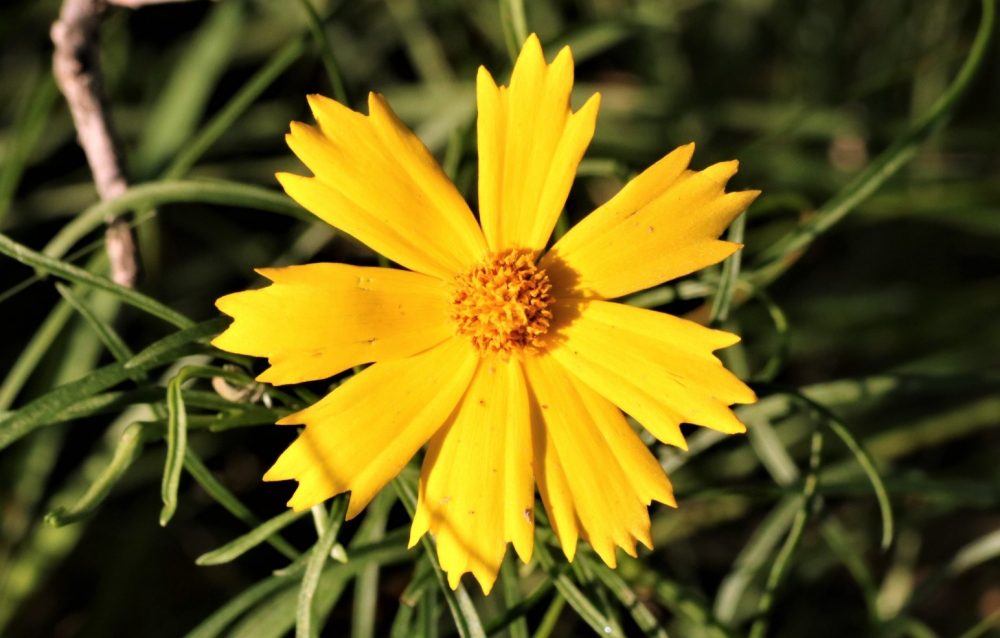 |
| Asteraceae | Ornamental goldenrold | Solidago cutleri | nectar, pollen | Hover flies, parasitoid. |  |
| Asteraceae | Goldenrod | Solidago spp. | nectar, pollen | Robber flies, assassin bugs, spiders, big-eyed bugs, ladybird beetles and other predatory beetles. |  |
| Apiaceae | Sweet fennel | Foeniculum vulgare | nectar | Hover flies, many species of parasitoids including Edovum puttleri and Pediobius foveolatus. |  |
| Apiaceae | Dill | Anethum graveolens | nectar | Hover flies, lacewings, pink spotted ladybird beetle, Edovum puttleri and Pediobius foveolatus. | 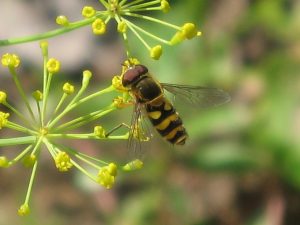 |
| Apiaceae | Wild carrot or Queen Anne’s lace | Daucus carota | nectar, overwintering site | Hover flies, Tiphia parasitoid wasps, ladybirds beetles including the seven-spotted ladybird beetle, several parasitoid and predatory wasps, lacewings and minute pirate bugs. Overwintering habitat for spiders. | 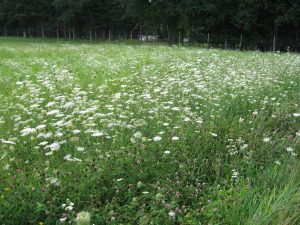 |
| Apiaceae | False Queen Anne’s lace, large bullwort | Ammi majus | nectar | Summer Tiphia parasitoids, ladybirds beetles, minute pirate bugs and parasitoids in the following families: braconidae, ichneumonidae, figitidae, tachinidae | 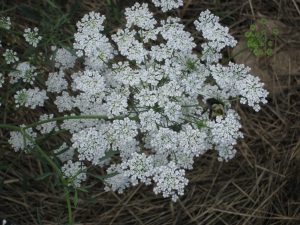 |
| Apiaceae | Coriander (cilantro) | Coriandrum sativum | nectar | Hover flies, parasitoid tachinid flies, lacewings, pink spotted ladybird beetle, Pediobius foveolatus parasitoids. | 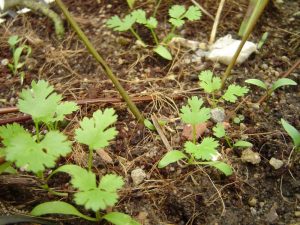 |
| Apiaceae | Garden Angelica | Angelica archangelica | nectar | Ladybird beetles, lacewings, hover flies |  |
| Asteraceae | Purple-stemmed Angelica | Angelica atropurpurea | nectar | Several species of parasitoids, ladybird beetles. Plant is suggested for use in rain gardens. | 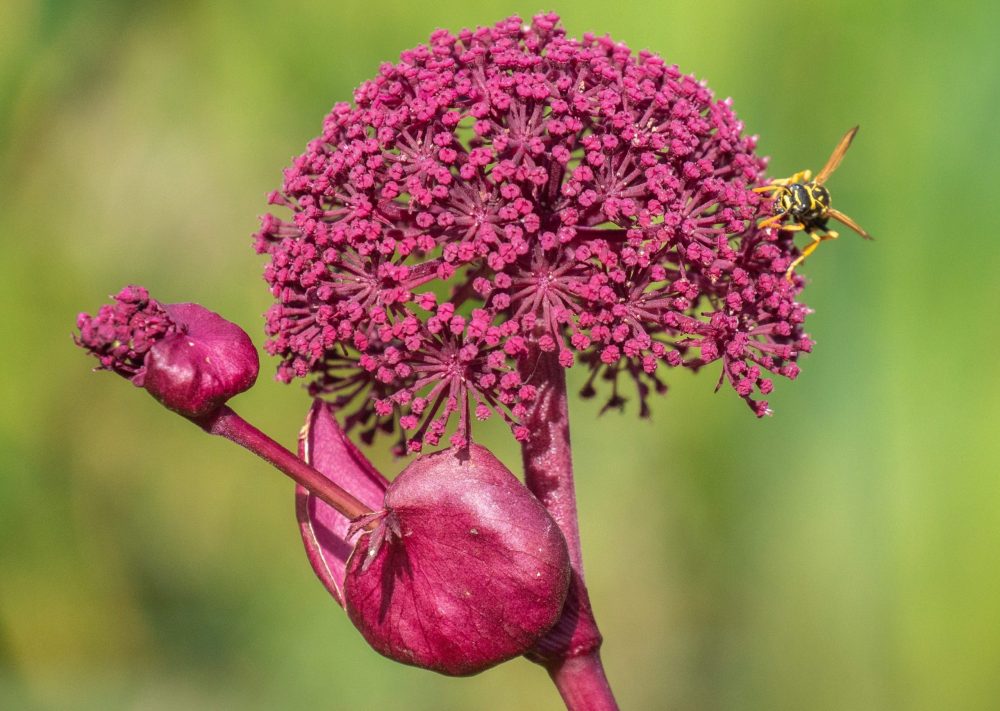 |
| Boraginaceae | Borage | Borago officinalis | nectar, pollen, egg-laying site for lacewings | Ground beetles, predatory nabid bugs, hover flies, lacewings, spiders | 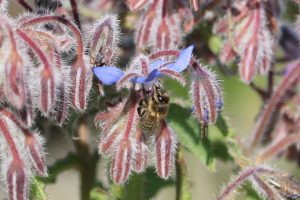 |
| Boraginaceae | Phacelia | Phacelia tanacetifolia | nectar, pollen, egg-laying site for lacewings | Lacewings, spiders, hoverflies | 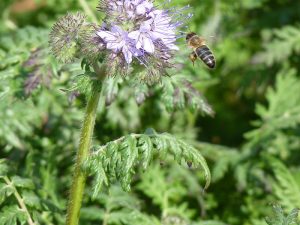 |
| Paeoniaceae | Peony | Paeonia lactiflora | extrafloral nectar in early spring before flower buds open | Spring Tiphia and other hymenopteran parasitoids, seven-spotted ladybird beetles | 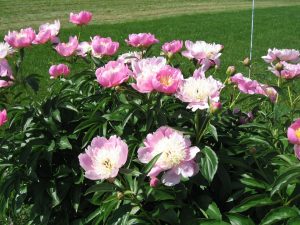 |
| Brassicaceae | Alyssum or carpet flower | Lobularia maritima | nectar | Hover flies, parasitoids | 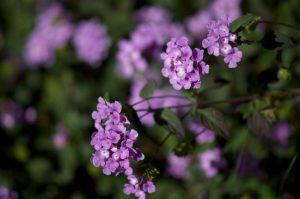 |
| Fabaceae | Lupinus polyphyllus | Achillea millefolium | egg-laying site for
lacewings |
Lacewings | 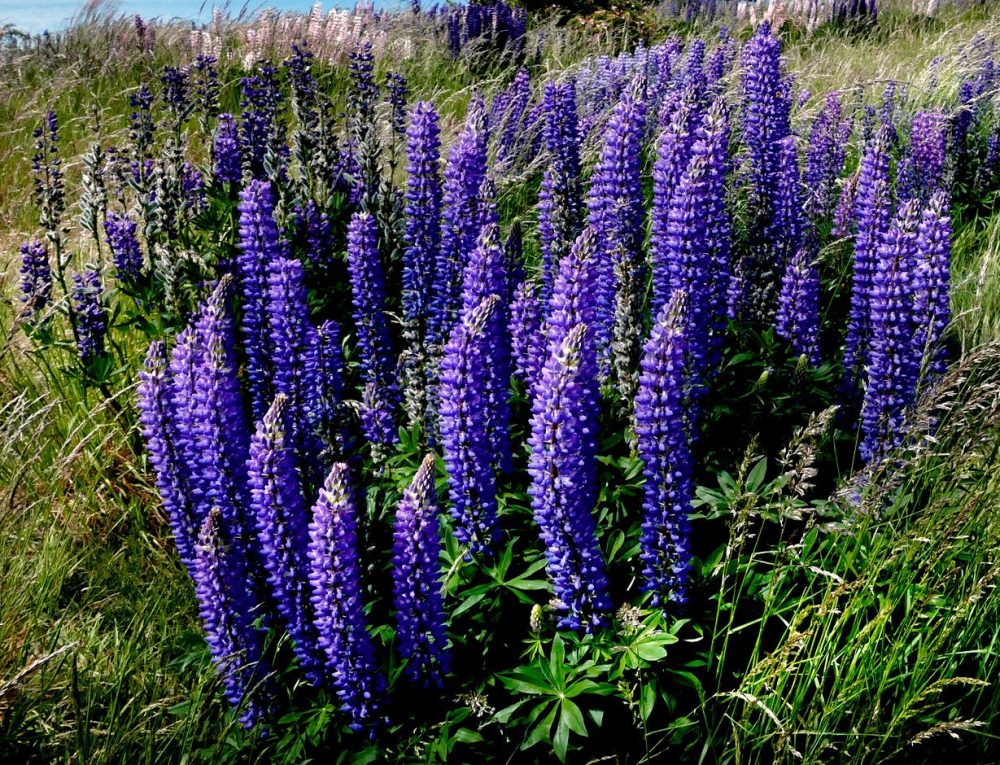 |
References
Bugg, R., R. Colfer, W. Chaney, H. Smith and J. Cannon. 2008. Flower flies (Syrphidae) and other biological control agents for aphids in vegetable crops. University of California, Publication 8285.
Landis, D.A., S.D. Wratten, and G. M. Gurr. 2000. Habitat management to conserve natural enemies of arthropod pests in agriculture. Annu. Rev. Entomol. 45:175-201.
Legrand, A. 2009a. Evaluation of ornamental plants as nectar sources for summer Tiphia. p. 77-79. In K. Guillard (ed), 2009 Annual Turfgrass Research Report, College of Agriculture and Natural Resources, University of Connecticut.
Legrand, A. 2009b. Evaluation of landscape ornamental plants as nectar plants for Tiphia vernalis and as host plants for pest scarab beetles. p. 73-76. In K. Guillard (ed), 2009 Annual Turfgrass Research Report, College of Agriculture and Natural Resources, University of Connecticut.
Legrand, A. 2010. Evaluation of landscape ornamental and herb plants as nectar sources for Tiphia parasitoid wasps. In K. Guillard (ed), 2010 Annual Turfgrass Research Report, College of Agriculture and Natural Resources, University of Connecticut.
Patt, J. M., G.C. Hamilton and J.H. Lashomb. 1997. Foraging success of parasitoid wasps on flowers: interplay of insect morphology, floral architecture and searching behavior. Ent. Exp. Appl. 83: 21-30.
Picket, C. and R. Bugg, eds. 1998. Enhancing biological control: habitat management to promote natural enemies of agricultural pests. University of California Press.
Prepared by Ana Legrand, Assistant Extension Professor, updated July 2020.
The information in this document is for educational purposes only. The recommendations contained are based on the best available knowledge at the time of publication. Any reference to commercial products, trade or brand names is for information only, and no endorsement or approval is intended. UConn Extension does not guarantee or warrant the standard of any product referenced or imply approval of the product to the exclusion of others which also may be available. UConn Extension/College of Agriculture, Health and Natural Resources is an equal opportunity program provider and employer.